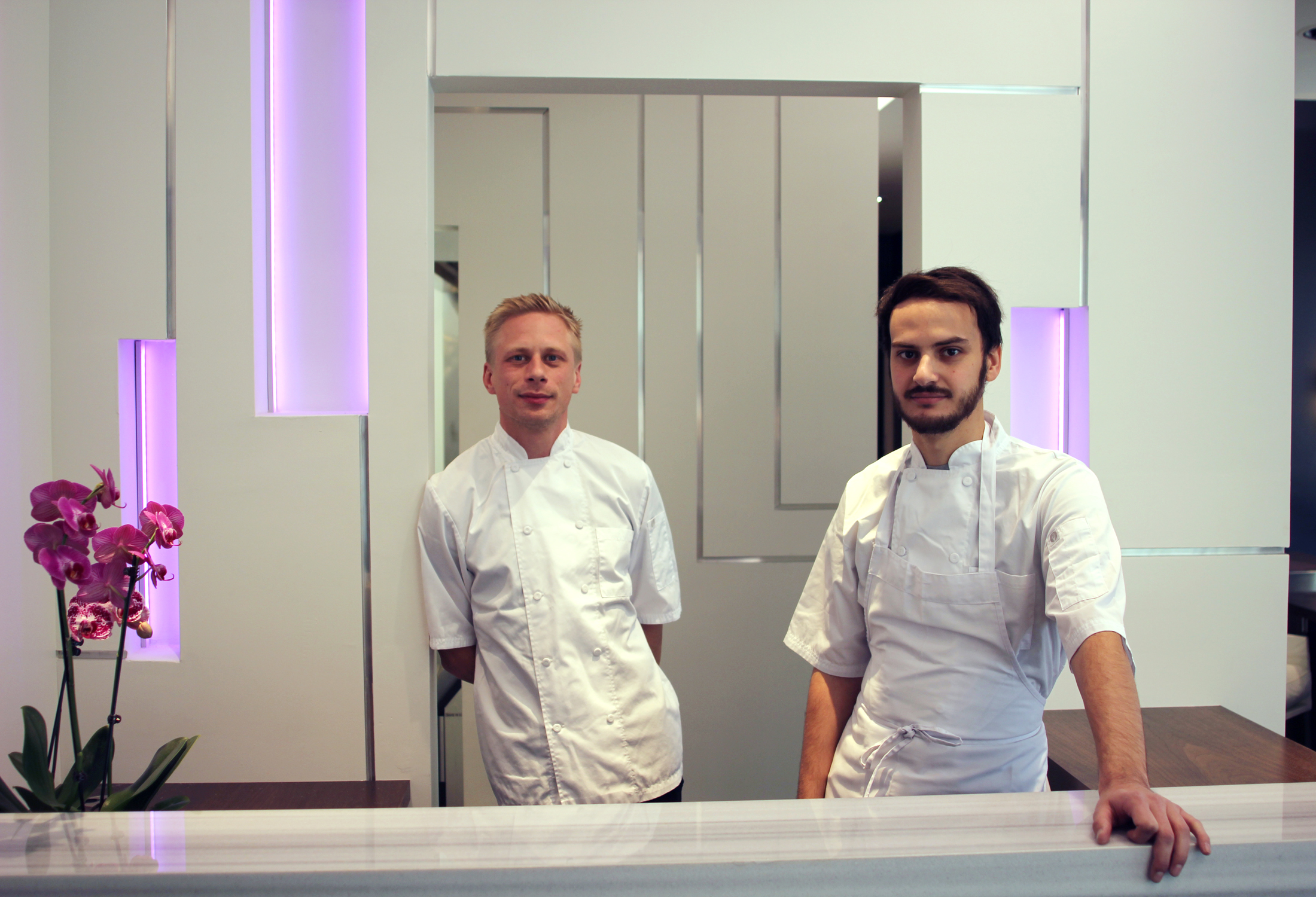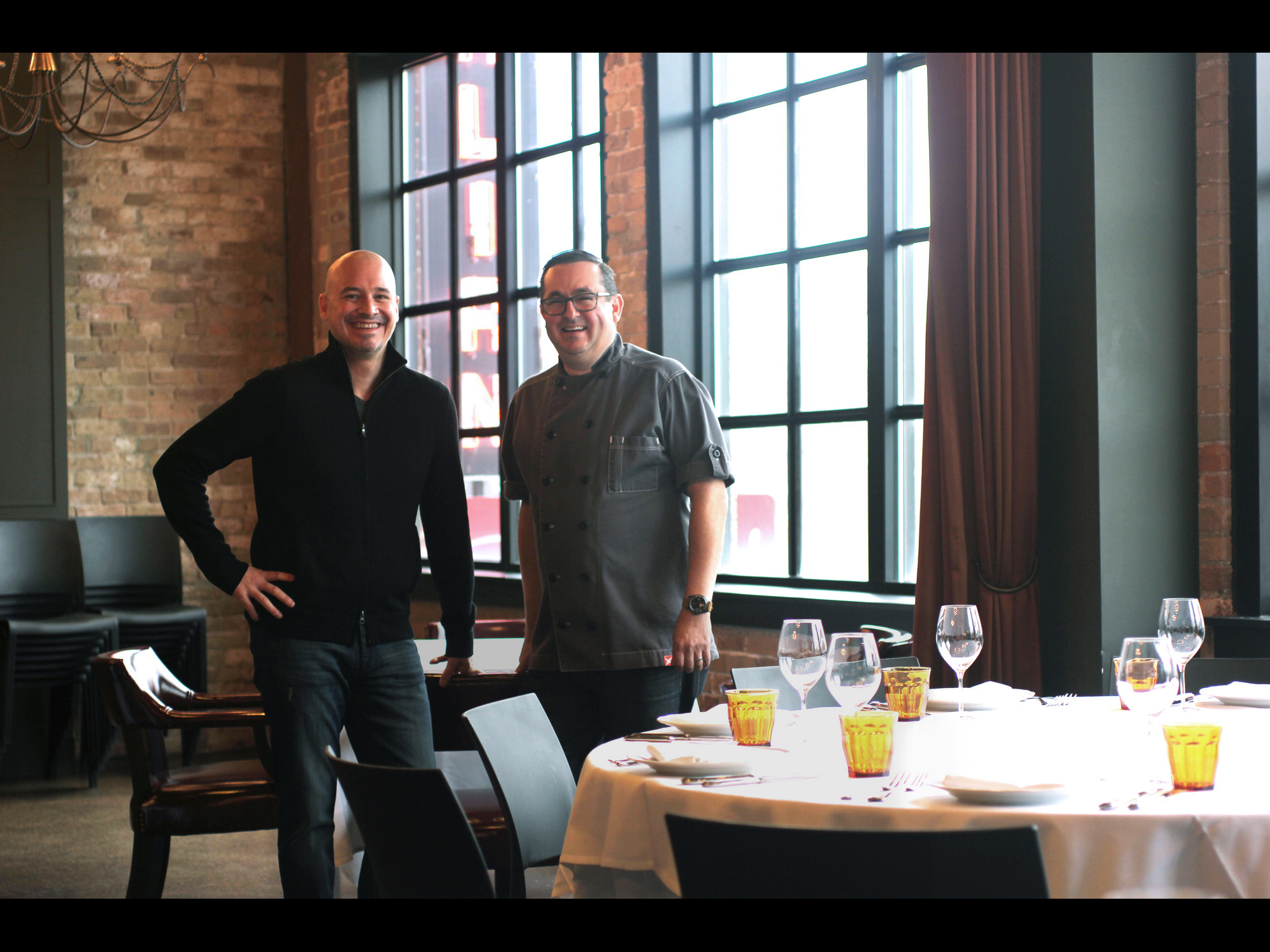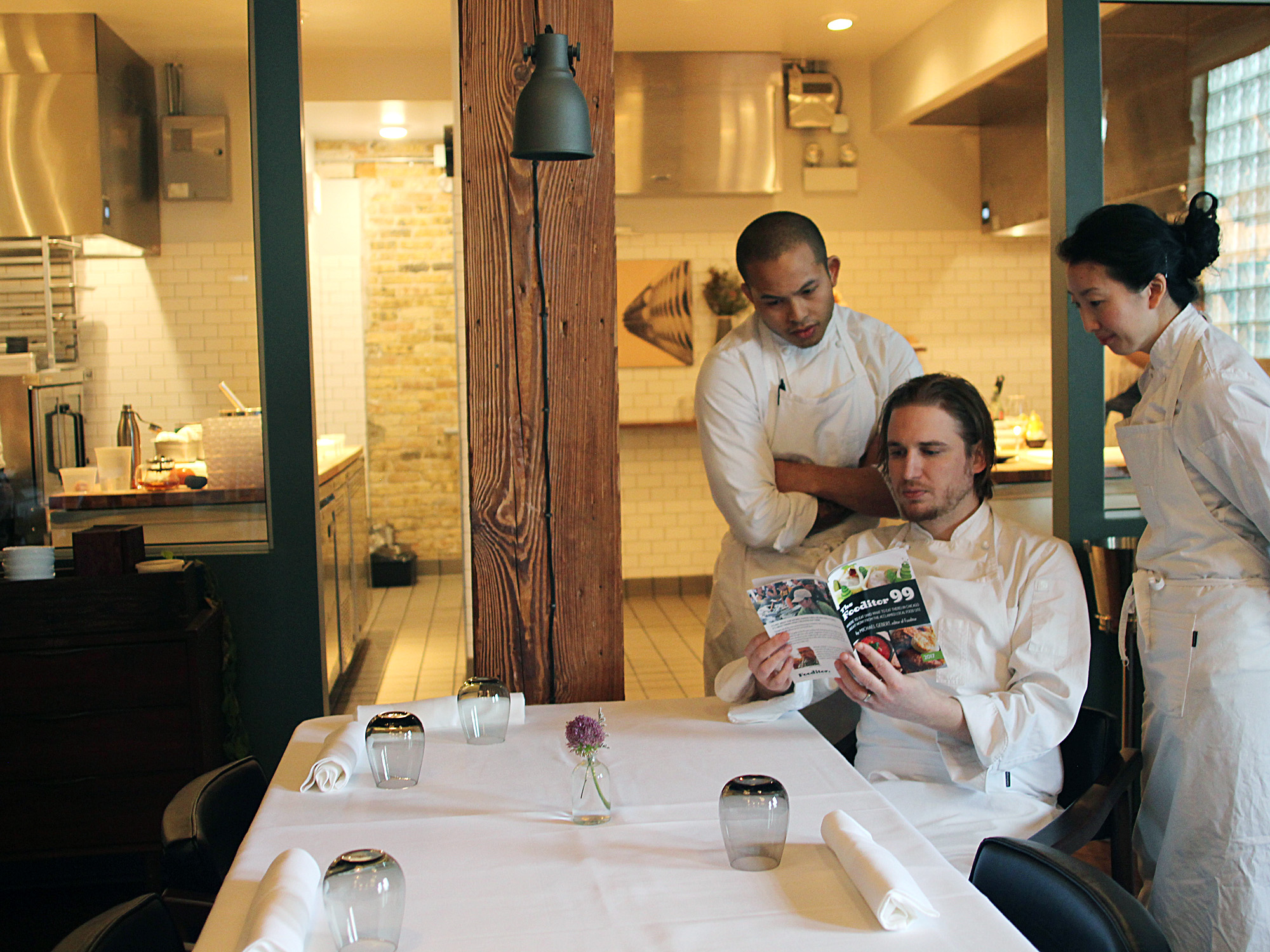AFTER A YEAR OF ASSIDUOUS EATING, I’M prepared to say it: there’s never been a better time to eat in Chicago than right now.
Admittedly, it’s one of those things you can never know—you can look at 1939’s movies before deciding whether the year of Gone With the Wind and The Wizard of Oz was the greatest movie year ever, but diners just have to go by their own brief experiences. Maybe 1928, the year that Hovar’s Russo-Turkic Tea Academy opened and the Hotel Belle-Lettres hired Pierre of Budapest as its Chef d’Aspic, was a better year for restaurants in Chicago. We’ll never know (though the snapping turtle soup at Lupitz’s sounds fantastic, from surviving recipes). (I made all those places up, in case you couldn’t tell.)
But based on my limited historical experience, I’m nevertheless prepared to call it: 2016 is the greatest year for dining in Chicago, ever. Here are my reasons—and then come back tomorrow for another dedicated observer of the scene saying I’m wrong.
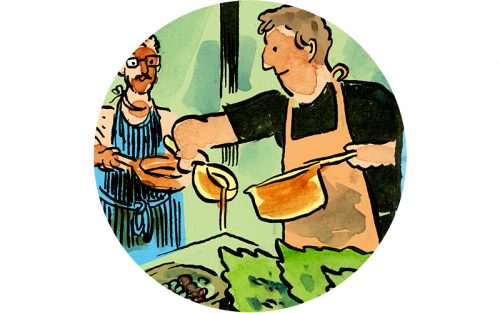
Personal restaurants are stronger than ever
A couple of years ago I was participating in one of those year-end wrap-up things, and everything we talked about for the next year was 1) enormous and 2) served steak. Okay, I exaggerate a bit, but the next year was going to be the year of places like Swift and Sons (steak), GT Prime (steak), Roister, Rick Bayless’s brewery project and so on—they were quality places with good people behind them, but very much the big restaurant biz, and often if not always fairly traditionalist in outlook.
But look what happened last year. Okay, a couple of those places that were meant for 2015 actually opened in 2016, like… GT Prime, Roister and Rick Bayless’s brewery project. But we’re also talking about pretty modest-sized places, like Oriole, Giant, El Che Bar and Monteverde. Even the bigger places are trying not to feel like bigger places—Smyth and The Loyalist has a lot of space, but divided into two smaller, more intimate concepts on separate floors, and the same is true of Bayless’s complex (which is three concepts, if you count the brewery and Cruz Blanca separately).
Chefs are driving their concepts, and not just in the wussy way of the phrase “chef driven restaurant”—they’re chef-driving like Burt as The Bandit.
But it’s not just size. What we’re excited about is that chefs are driving their concepts. And not just in the wussy, half-apologetic way of the phrase “chef driven restaurant”—they’re chef-driving like Burt as The Bandit, unabashedly making the food they want to make and packing them in. The restaurants and the chefs are more unified than ever— Oriole is Noah Sandoval and Genie Kwon. Giant is Jason Vincent and Ben Lustbader. Monteverde is everything Sarah Grueneberg learned at Spiaggia and everything she learned outside of it, too. El Che Bar is everything John Manion remembers about Argentina. And Rick Bayless continues to prove that he has entirely new ways to distill the essence of his beloved Mexico.
If we’re talking about movie years, it’s not the big studio year of 1939, it’s the indie early 70s, the easy riders and raging bulls making the restaurants they want to make and packing the house for their counter culture. Maybe a restaurant Heaven’s Gate will come along to end the era, but for now, it’s a great time to be a bold eater looking for the food of bold chefs.
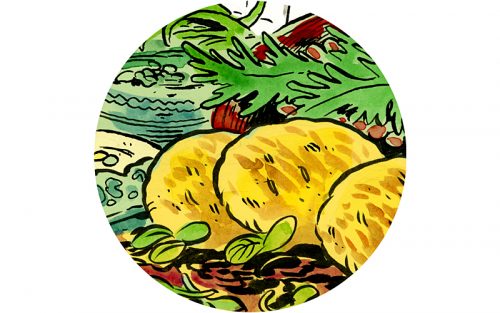
Vegetables are the new bacon
The bacon and pork craze was fun. We all know that. It did a good thing, amid much excess and silliness, which was remind us that pigs have so much more variety than just tenderloins, the blandest, most monotonal cut of the pig.
But a couple of years ago PR for The Publican was peddling the idea of their “barbecued” carrots, already a sign that one of the leading advocates of the Pork Party, Paul Kahan, was moving on. Not abandoning pork (there’s plenty in the case at PQM), but looking at vegetables as more than a dutiful accompaniment. Grace was another important influence, with less reliance on protein than any other tasting menu at that level.
And this year, I think, that change in direction really blossomed—as I look back, many of the things I remember best from this year were vegetable-based (or built on something that came from the ground, anyway). Cantaloupe with lime leaf and chile at The Loyalist. Broccoli with hummus, or eggplant with something like a barbecue sauce at Giant. More eggplant with cheese curds at Publican Anker. Beet tartare (with a little anchovy help) at Bad Hunter. Umami-rich pizza with black garlic and miso from Nomad Pizza Co. Chickpea-miso on slices of onion at a Thurk popup. These are the things I remember from this year, robust and complex, that made me want to puzzle them out, learn their secrets. These vegetables are nobody’s side dishes.
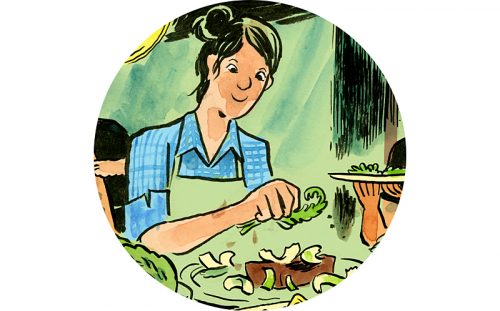
Asian food is everywhere
Sean Pharr has since moved to Madison, but I interviewed him when he was the chef at The Bristol (another leading figure in the Pork Party) and one thing we talked about was, if in 2008 The Bristol had been the cutting edge with pork and offal, what was the equivalent for 2016’s Bristol? One answer, at least, was Asian flavors, which is how fried rice landed (temporarily) at a restaurant that at bottom was rooted in Italian cooking.
Asian food has always been a culinary lingua franca of chefs of many types, the hours and scarfability with beer of late-night sushi, Chinese or Thai working well for a group whose shifts tend to end around midnight or later. But it didn’t cross over into the world of mid to fine dining—Asian fusion nearly always meant “lamer than real Asian food.”
Not any more. America is becoming more Asian, Asians in the restaurant industry are younger and more attuned to the culture than their parents, and we’re seeing all of that reflected in an increased Asian presence in upscale dining—and an increased presence of high end technique and hip restaurant marketing savvy in Asian dining. Fat Rice, Parachute, Yusho, Mott Street, yes; but also Ming Hin, Hanbun, Crisp, Del Seoul. So much of the energy and creativity in dining today is coming from this direction, and it’s great. Go east, young chef.

Mexican food is everywhere
Another immigrant group is going through a very similar process, and that’s Mexicans and Mexican cuisine. Again, this hasn’t always been a good thing, it has led to a lot of dumbing down, but one thing about being in Chicago is that even the Americanized stuff can be pretty darn Mexican, using good corn tortillas from El Milagro and so on. Go eat Mexican-American in some other city if you doubt it!
But again, what’s great isn’t that the high end and the low end are making a few symbolic cross-cultural trades, like the Russians sending the Bolshoi on a U.S. tour during the Cold War. It’s that the lines are blurring entirely and we’re simply getting well-crafted Mexican food all over town, even as the Chicago cheap taco joint remains the roots of our scene. It’s all bueno.
Okay, maybe not everything is perfect
I’m not trying to go all PolyScienceAnna here. The restaurant industry has been booming so long here we don’t remember what a real recession would look like, but if you have a favorite place and you want to make sure it keeps going, spend money there now. If you like the mix of glamour and grittiness in the West Loop (not that blue collar Chicago is here to f’ing amuse you), better go enjoy it now, because the industrial businesses are selling out fast, and parts of it are going to take on a whiff of soulless suburban mall.
Food media remains a tough area to be excited about. People are talking about fake news in politics, but fake is the reality in food media. It’s not just what I call “Turing Test” food writing—the same hyped-up clichés over and over, recombined as if by machine.
But we’re now in a world where people who’ve never been to the restaurants they’re writing about, and may never have even been to Chicago, make lists entirely off of Google and Yelp. Often making bonehead mistakes along the way—remember the list of Chicago’s top tasting menus that told people to check out what Homaro Cantu was doing at Moto, after he’d died and it had closed? And then—certainly adding insult to injury for a local food media source like me—you see chefs thanking these bots on social media, as if their mass-produced “opinions” represented anything real at all. How quaint the concerns about reviewer ethics and anonymity of just a few years ago seem in a post-ethical media environment like that.
Still. It’s been a great year if you love restaurants, and food, and the creativity of chefs, and the meeting of cultures that is restaurant culture. Other than the Cubs winning the World Series (it still sounds weird to say it), 2016 didn’t do many good things… but at least it was good to eat.
Tomorrow: read a contrary view from Joe Campagna.
Michael Gebert is the editor of Fooditor.
Give someone the gift of good restaurants this holiday season—99 of them, in fact. Get The Fooditor 99 at Amazon and for Kindle here.
Latest
Join the Discussion
After you comment, click Post. If you're not already logged in you will be asked to log in or register with Disqus.





